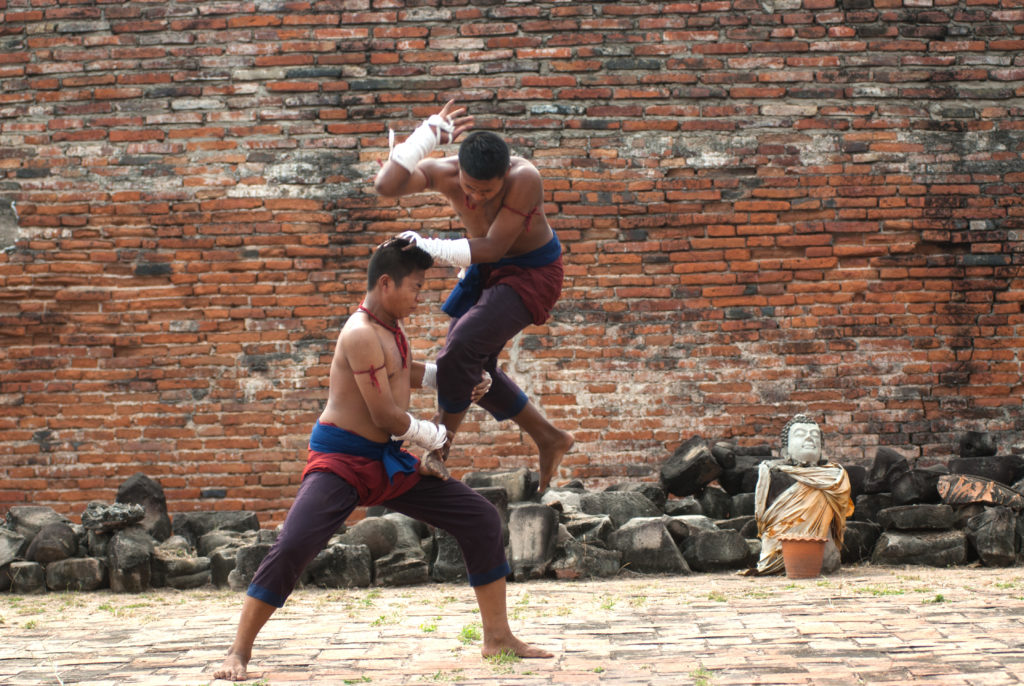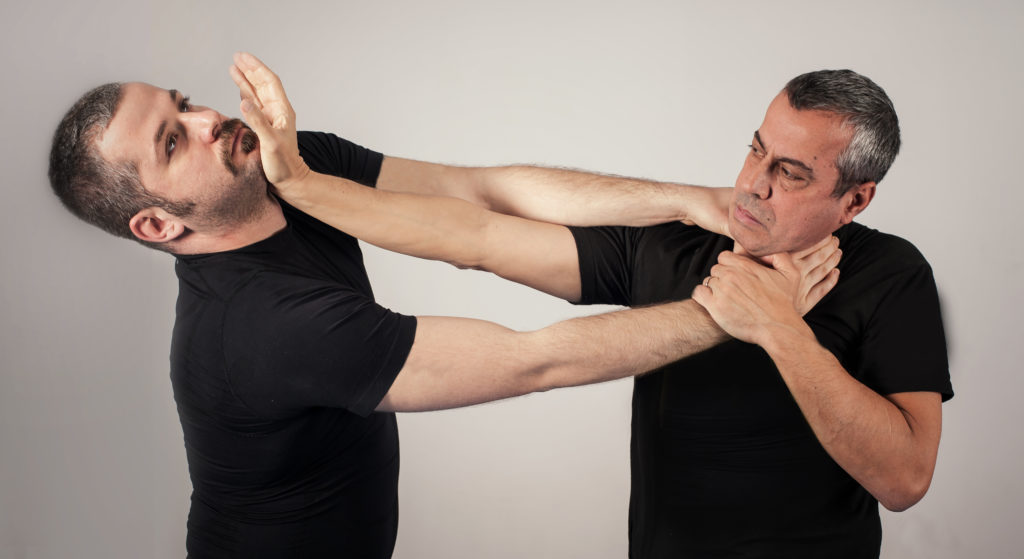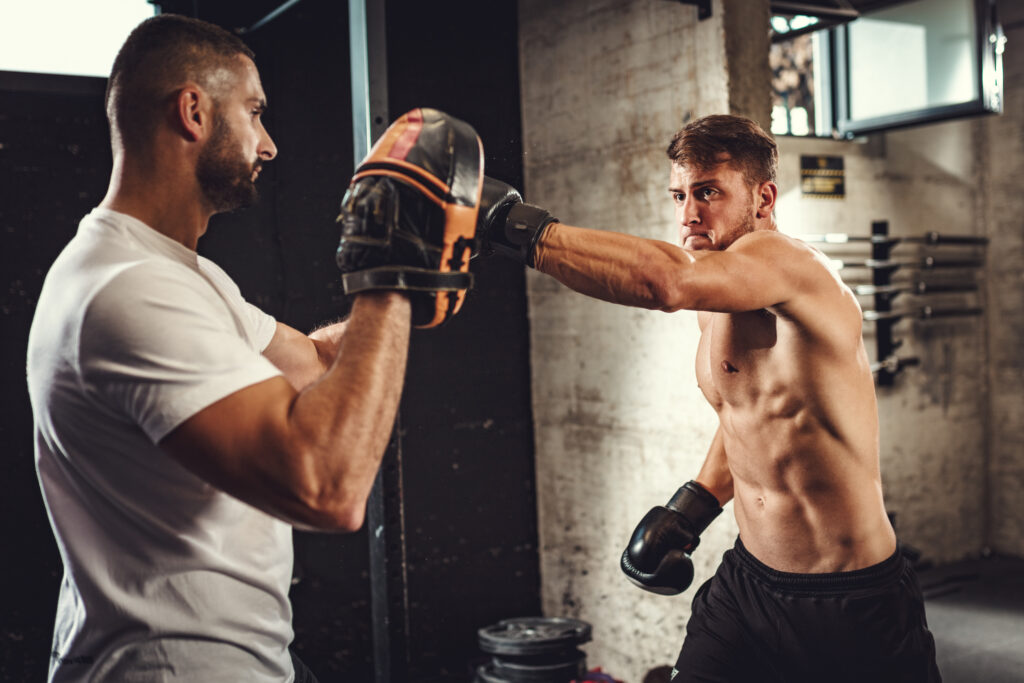Arnis vs Muay thai; which is the better style to learn and train for me?
What are the main differences between Arnis and Muay thai?
Which style is more effective for self defense or for weight loss?
And what exactly is Arnis anyway?
Arnis, a Brief Overview
Arnis, also known as Eskrima or Kali, is a Filipino martial art that primarily focuses on weapon-based fighting.
The origins of Arnis can be traced back to the indigenous people of the Philippines, particularly the Visayan islands.
The exact origins of Arnis are difficult to pinpoint with certainty due to the scarcity of written records before the arrival of European colonizers in the Philippines.
However, it is believed that Arnis evolved from centuries-old indigenous fighting systems that were practiced by various ethnic groups in the Philippines.

Before the arrival of the Spanish in the 16th century, the Philippines consisted of a number of separate and often warring chiefdoms.
Each region had its own distinct martial arts traditions, some of which incorporated the use of weapons like swords, daggers, and sticks.
The Filipinos’ exposure to other martial arts forms, such as those from neighboring Southeast Asian countries, might have also influenced the development of Arnis.
During the Spanish colonial period, the practice of indigenous martial arts was suppressed.
The Spanish authorities sought to control the native population and discouraged the use of weapons, so many Filipinos began practicing their martial arts in secret or modified them to appear as dances or cultural performances.
This allowed the preservation and transmission of their fighting techniques through disguised forms.
Arnis continued to evolve over time, adapting to the changing needs and circumstances of the Filipino people.
It gained renewed popularity during the Philippine struggle for independence from Spanish and later American rule.
In the early 20th century, efforts were made to organize and codify Arnis into a structured system.
This led to the establishment of various styles and systems of Arnis, each with its own unique techniques and principles.
Today, Arnis is practiced both as a martial art and a sport.
It has gained international recognition and has been integrated into military and law enforcement training programs in the Philippines and other countries.
The Filipino martial arts, including Arnis, are treasured as an important part of the country’s cultural heritage.
Arnis vs Muay thai – Main Differences
Arnis and Muay thai originate from the same region of South East Asia and have several similarities.
However they are definitely distinct styles and this is also related to the cultures they originate from i.e Phillipines for Arnis and Thai culture for Muay thai.
The main differences are outlined below:
Weapons vs Empty Hand
One of the main differences between Arnis vs Muay thai is the extensive use and training of weapons in the Arnis system.
Arnis students start their instruction by learning to fight with weapons.
Only after sufficiently mastering stick and knife techniques do students advance to empty-hand training.
Muay thai on the other hand is solely focussed on unarmed combat and using the 8 Limbs as weapons.

However muay thai does originate from Muay boran which is the battlefield hand to hand combat system used by Thai warriors during the warring periods of Ancient Thailand.
Thai warriors practiced krabi krabong which is the weapons component of their battlefield art.
However muay thai is solely focussed on ring competition and does not consider weapons at all in training.
Professional Combat Sports Competition & Rules
Arnis is practiced both as a martial art and a sport, but formal competition is less common.
When competitions do take place, they can vary in rules and formats.
Muay Thai has a well-established competitive scene with standardized rules very much drawn upon from Western Boxing’s queensbury rules which include weight classes, the use of the ring, knockout rule and timed rounds.
Muay thai is practiced and competed internationally, including in events such as Muay Thai championships and professional fights.
Techniques
Arnis employs a wide range of techniques, including striking, blocking, trapping, joint locks, and disarms.
It emphasizes fluidity, quick reflexes, and the ability to flow seamlessly between weapon and empty-hand techniques.
Muay Thai, on the other hand, emphasizes powerful strikes using the fists, elbows, knees, and shins. Clinching and sweeps are also prominent in Muay Thai.
Training
Arnis training often involves partner drills, sparring, and forms (also known as “katas”) that simulate combat situations.
It places importance on timing, distance, and coordination.
Muay Thai training typically involves pad work, heavy bag training, and sparring. It focuses on conditioning, building endurance, and developing power in strikes.
Arnis vs Muay Thai for Self Defense?
Training Arnis can provide several advantages for self-defense purposes.
Muay thai as well has many advatantages when it comes to self defense purposes.
Below we look at the advantages that both styles offer in terms of self defense.
Some of the main features of Arnis that make this style very practical for self defense include:
Weapons Proficiency:
Arnis focuses on weapon-based techniques, including sticks, knives, and improvised weapons.
Learning how to use and defend against weapons enhances your self-defense capabilities. It teaches you how to disarm and neutralize an armed attacker effectively.
Practicality:
Arnis techniques are designed to be practical and efficient.
The emphasis is on real-world combat situations, teaching you how to respond effectively in self-defense scenarios.
The training incorporates realistic scenarios and sparring, helping you develop the ability to react under pressure.

Adaptability:
Arnis teaches adaptability by utilizing both weapons and empty-hand techniques.
This flexibility allows you to transition seamlessly between armed and unarmed combat, which can be crucial in self-defense situations where weapons may not be available or appropriate.
Coordination and Reflexes:
Arnis training improves hand-eye coordination, reflexes, and overall body coordination. These skills are valuable in self-defense, enabling you to react quickly, evade attacks, and deliver effective counterstrikes.
Sensitivity and Timing:
Arnis places a strong emphasis on sensitivity and timing, known as “flow.” This training enhances your ability to read an opponent’s movements, anticipate attacks, and respond accordingly. It helps you develop a heightened awareness of your surroundings, which is crucial for self-defense.
Practical Self-Defense Techniques:
Arnis incorporates a variety of striking, blocking, and grappling techniques that can be applied in real-life self-defense situations. These techniques are practical, efficient, and versatile, providing you with a range of options to defend yourself effectively.
Muay Thai also can be highly useful for self-defense purposes.
Striking Proficiency:
Muay Thai emphasizes powerful strikes using punches, kicks, knees, and elbows.
Training in Muay Thai helps develop effective striking techniques that can be utilized in self-defense situations.
You learn how to generate power, accuracy, and speed in your strikes, which can be invaluable in defending yourself.
Clinching and Close-Range Combat:
Muay Thai includes clinching techniques that allow you to control and manipulate an opponent at close range.
This can be advantageous in self-defense scenarios where the fight may end up in a close-quarters situation.
Clinching skills provide options for strikes, throws, and takedowns to gain control or create distance.
Conditioning and Fitness:
Muay Thai training is physically demanding and helps develop exceptional conditioning, strength, and endurance.
Being in good physical shape can give you an advantage in self-defense situations, allowing you to withstand and outlast physical confrontations.
Realistic Training:
Muay Thai training often involves sparring and realistic drills that simulate combat situations.
This type of training allows practitioners to develop practical fighting skills and the ability to handle the pressure of a physical confrontation.
It enhances your ability to react effectively and make split-second decisions in self-defense scenarios.
Mental Toughness:
Training in Muay Thai requires mental resilience and discipline.
The challenging nature of the sport builds mental toughness, enabling you to remain composed and focused during high-stress situations. This mental fortitude can be crucial in self-defense encounters.
Versatility:
Muay Thai techniques can be adapted to different self-defense scenarios, whether standing or on the ground.
It provides you with a range of striking and clinching options that can be used effectively in various real-life situations.
Use in Military and Law Enforcement
Arnis is used by military and special forces units, particularly in the Philippines.
The Filipino martial arts, including Arnis, have been incorporated into the training programs of the Armed Forces of the Philippines (AFP) and various law enforcement agencies in the country.
The AFP recognizes the value of indigenous martial arts and has integrated Arnis into their close-quarters combat training.
Arnis techniques are taught to soldiers to enhance their skills in hand-to-hand combat, weapon retention, disarming techniques, and close-quarters fighting.

The training emphasizes practicality, adaptability, and efficiency in real-life combat situations.
Similarly, special forces units, such as the Philippine Army Special Forces, also incorporate Arnis into their training curriculum.
These elite units undergo rigorous training that includes weapon-based techniques, empty-hand combat, and other skills derived from Arnis.
The goal is to provide special forces personnel with a well-rounded skill set for various combat scenarios they may encounter.
Arnis and other Filipino martial arts have gained recognition internationally, and their effectiveness has been acknowledged by other military and law enforcement organizations around the world.
In addition to the Philippines, Arnis training and techniques have been adopted by some special forces units and tactical teams in other countries for their practicality and combat effectiveness.
Arnis vs Muay Thai for Weight Loss?
Arnis training involves a combination of cardiovascular exercise, strength training, and agility work.
The dynamic nature of Arnis, with its striking techniques, footwork, and drills, can provide a great cardiovascular workout, helping burn calories and improve cardiovascular fitness.
Additionally, the full-body movements and techniques involved in Arnis can contribute to muscle toning and development, which can increase overall metabolic rate and aid in weight loss.
Muay Thai training is known for its intense workouts and high energy expenditure.

The rigorous training sessions, which include pad work, bag work, skipping rope, and sparring, can elevate your heart rate and lead to significant calorie burn.
Muay Thai training also engages various muscle groups throughout the body, helping to increase muscle mass and boost metabolism, which aids in weight loss.
Both Arnis and Muay Thai provide a combination of aerobic and anaerobic exercises, which are effective for burning calories, shedding fat, and improving overall fitness.



